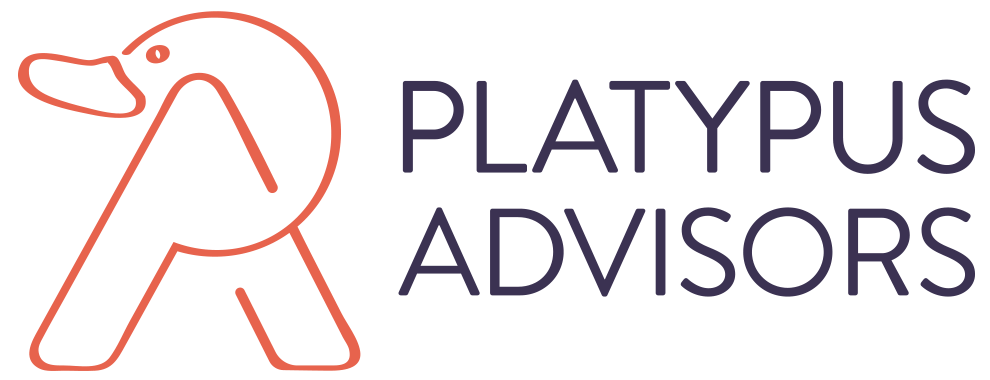The Platypus’s Potential
By Caroline Barlerin
Darwin talked about survival of the fittest.
But read carefully: what he was really talking about was survival of the most flexible.
Evolve or die. This seems true everywhere these days, especially in the social good space.
I say this as a platypus. As the odd animal out. Like many who live and work in multiple worlds—on land and in water, in business and in philanthropy—that’s what I feel like. That’s what I am.
Have you ever had someone raise an arched eyebrow when they see your background spans business, civic, and social sectors?
Do they tilt their heads when you tell them about the work you do, or want to do, in the grey zone between profit and purpose?
Do they give you a look as you passionately try to explain the magic behind program-related investments, B-corporations or social enterprises?
Then you might be a platypus too. Which would be great news for me, because it’s been a pretty lonely path over the years. I’ve been the bleeding heart at business school and the hard head at a non-profit. Now, I’m an embedded do-gooder in corporate America. The upside? It’s been an educational path, too. It has taught me that the hybrid world is not just where I work but is also where my—our—power lies.
“The hybrid world is not just where I work but is also where my—our—power lies.”
At every turn, I see the many advantages of being a platypus. And I see more and more of us out there. Duck-billed, beaver-tailed, otter-footed, this creature is a mish-mash, unlike any other mammals. Having been around for 110 million years, there must be lessons to learn from its evolution. Here are the top three:
#1 Like the platypus, we social innovators live in two worlds, and must master both. The platypus is amphibious, cruising both land and water. For us, the ability to see things from various vantage points at once—to parallel process problems and their solutions multiple ways is a valuable and valued trait these days. We know emotion and execution, both. We also know what combination of these is optimal for getting things done.
#2 We are ever-adaptable, now more than ever. The platypus has webbing, a snout, electrolocation ability, even venom. And we have tools for every situation, too (though we may not always use them!). Our varied toolbox enables us to anticipate, prepare for, and tackle both the incremental change and sudden disruptions we face today—at an individual and systems level; locally, regionally, and globally.
#3 We, too, are irrepressible. The platypus is most active during the day, especially if the sky is overcast. Same with us! When things look worst, that’s when we really get motivated.
“Our varied toolbox enables us to anticipate, prepare for, and tackle incremental change and sudden disruptions.”
There’s a lot of talk about finding the next unicorn, but I think we need to start searching for a different species: the platypus. Especially when ‘intersectionality’ is the hot topic of the day. We hybrid professionals know that each sector offers its own strengths, skills, and perspectives.
Nonprofit experience makes you scrappy, appreciative of resources, and focused on the mission and a bottom line defined by impact. Business experience enables you to drive efficiencies and forces you to think about the competitors and prioritize a bottom line defined by quarterly results. We platypi are bilingual in profit and purpose—and we just get on with things.
This combination is just what today’s challenges demand. They are far too big and complex for any one sector to tackle alone. We must come together, check ego and agenda at the door, put the problem at the center of the discussion, and then each offer our perspective and unique resources to create solutions.
It’s time to be adaptable and be fearless. Go ahead, embrace your inner platypus.

